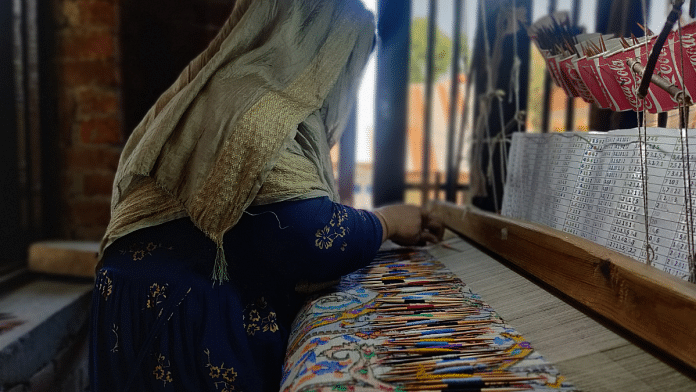Baramulla/Srinagar: Mohammad Yusuf, 40, wears thick glasses that make his eyes look googly. For 20 years of his life, he worked as a carpet weaver in his village—an art that was passed down to him from previous generations.
But today, Yusuf works as an unskilled labourer constructing houses. A Pasmanda Shia Muslim, he says carpet weaving gave him nothing but damage to his eyes. “I earn Rs 300 to 400 doing construction labour; as a weaver, I hardly earned Rs 150 a day. Additionally, my eyesight has become really weak at -5.”
Yusuf is not an exception. Kashmiri carpet weavers are leaving their family craft—one that has been passed on for generations—as the earnings severely deteriorate. The artisans are either choosing to work in different looms making Pashmina Kani Shawls or shifting to other sectors altogether.
Meanwhile, technology and counterfeit products have also been playing a huge role in pushing this art into obscurity. Sheikh Ashiq Ahmed, the President of Kashmir Chamber of Commerce and a carpet exporter, says demand for Kashmiri carpets has shrunk by up to 80 per cent since 2014, adding that active efforts need to be taken to revive it.
Also read: China loves Guntur chillis — How the Andhra district produced a spicy global product
A dying art
The art style of Kashmiri carpets is largely borrowed from Iranian designs. Most carpet makers belong to the Shia community and weavers are overwhelmingly from the backward Pasmanda caste.
A standard Kashmiri hand-woven carpet in the market can cost anywhere upwards of Rs 1 lakh. But for the same carpet, weavers get only Rs 40, 000 to 50,000. One hand-woven carpet is typically worked on by three to four people and takes four to five months to complete.
Traditionally, it was a seasonal job in the winters when families would make carpets inside their houses. They would take up agricultural jobs in summer.
The process of handweaving a carpet is a complicated one. First, raw material is supplied to weavers by middlemen/exporters. The weavers receive taleem (instructions) set by designers typically in Srinagar. This taleem is written in Persian. It has a separate script like music.
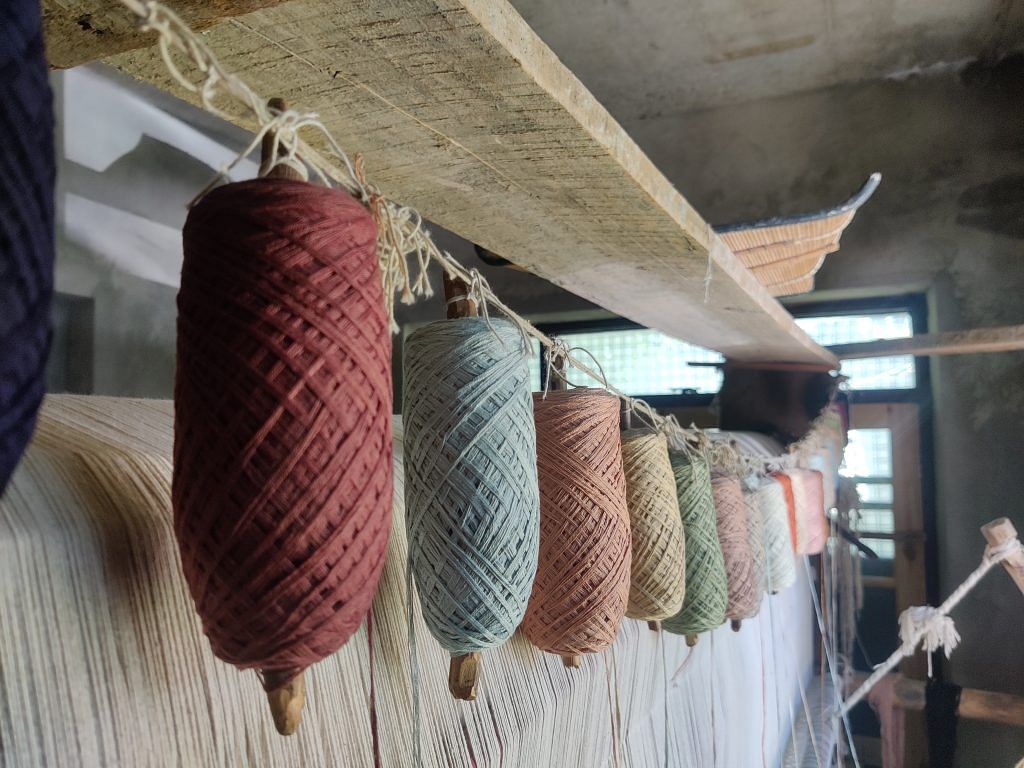
The weaver then sits on a charkha, through which he ties four threads into one bigger thread. He then sits on a room-sized loom, reads the taleem that tells him about the colour or the design needed in the process and starts weaving the carpet.
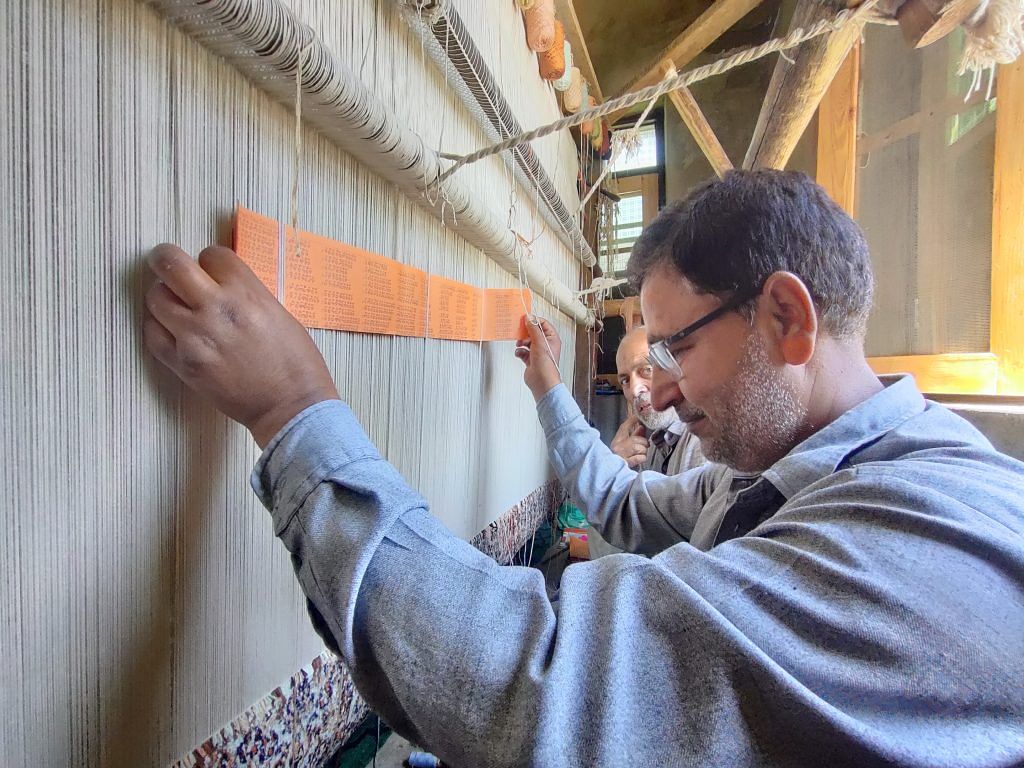
Weavers often find themselves in debt traps because they’re extended a credit line by exporters or middlemen to procure this raw material. By the time one carpet is made, they’re in need of more loans from the middlemen and the cycle continues. Ever since the Narendra Modi government implemented demonetisation in 2016, this credit line has also been difficult to come by—another reason why many have left carpet-making.
“Exporters are earning the most profit in carpet or shawl-making. They’re among the most affluent Kashmiris, while we make minimum wage,” said Mohd Yusuf from Khanpat village in Baramulla.
Carpet weaving is a generational art. But since labourers are unable to earn more than Rs 150 a day, weavers have stopped teaching the art to their children, thereby endangering it.
“Koi bacha he nahi hai carpet banane wala (No carpet maker is left),” laments 50-year-old Ghulam Mohammad. “Weaving Pashmina, which is a more intricate job, offers labour of Rs 500 a day, so I didn’t teach my children carpet-making. Instead, I sent them out to learn how to make Pashmina and set up a loom for them,” says Mohammad, who has been a carpet weaver since the age of 10.
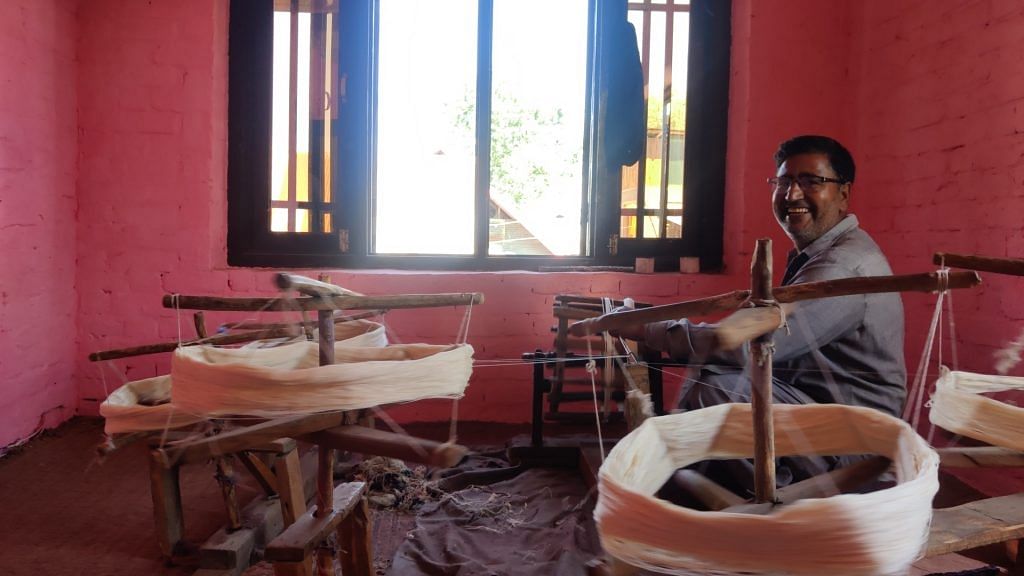
Mohd Yusuf, too, is a first-generation Pashmina-maker. His family was in the carpet-making business, but he chose Pashmina for better returns. “We need to save these art forms because they’re our main source of income. The exporters still have the potential to change their business. The artisan has nothing but his art.”
Carpet weavers get into Pashmina making because the art is similar and easy to pick up. Pashmina products are more in demand since they’re for individual use. They also have a good domestic demand, especially during the wedding season.
Yusuf says the designers and middlemen have also reduced the number of knots per square inch needed in a carpet to ensure durability. “Knots per square inch used to be 16×16, nowadays it is 10×10,” he alleges. This has been done to cut costs. However, it produces a lower-quality carpet, which has also led to the downfall in the image of Kashmiri carpets, and hence, their demand.
Also read: Why India’s beautiful flowers miss the plane of exports while Kenya & Ethiopia fly high
Royal history of Pashmina
While Pashmina is invariably being preferred over carpet-making today, the world-renowned Kashmiri shawls have a rich history that spans continents.
Kashmiri shawls have been woven since the first century AD. Fragments of Pashmina, dating back to the third century, have been found in present-day Egypt and Syria. Older shawls kept in museums date back only to the 17th century, however, as the shawls don’t survive for long.
Coinciding with the Mughal love for floral designs, the most popular motifs on the carpets were flowery designs, which were particularly popular in the 17th century. Over time, designs became denser and more abstract.
A moon design, which was a circle in the centre of an embroidered background, was the most popular design in the 19th century.
Kashmiri shawls have a rich history and have been in vogue across the globe for centuries. The word ‘Cashmere’, derived from Kashmiri, has been associated with luxury in the West for years now. Pashmina shawls became the ‘it’ thing in the 1990s, and their counterfeit was widely manufactured and sold in Europe. In the 2000s, imitation products led ‘Pashmina’ to become a middle-class craze across the continent.
However, technological imitation in European markets led to the decline of the authentic Kashmiri design and hand-woven shawls, notes Michelle Maskiell in a 2002 academic paper titled “Consuming Kashmir: Shawls and Empires, 1500-2000”.
Europe has always been the biggest market for the original product. “Merchants and peddlers in caravans carried finished shawls overland, some going north to Central Asia and East to China while others ventured west to Russia and the Ottoman Empire. Although Western historiography of India’s domestic and foreign trade in the 17th and 18th centuries has stressed European sea trade with India, exports to Europe were [still] exceeded by far by the volume of India’s trade with Asian and African countries,” Maskiell writes.
The shawls also found a revered place in the royal circles of the Mughals in North India and the Zafavid, Zand and Qajar empires in Iran. Napoleon and his men also brought Kashmiri shawls from the French campaign in Egypt and Syria (1798-1801). Maskiell further mentions how Empress Josephine (1804-1809) introduced Pashmina on the streets of Paris.
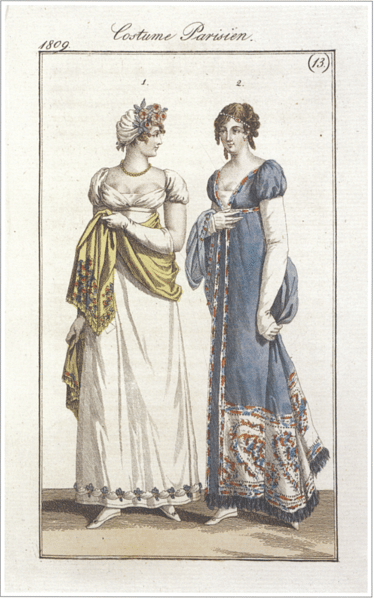
During the 19th century, Kashmiri Pashmina was the favourite wedding gift in France and England. However, by the 1870s, the heyday of Pashmina ended in the West, primarily because of the Franco-Prussian war. By the late 19th century, Kashmiri shawl trade was disrupted, only to follow more decline.
In the 19th century, the English also started promoting British machine-made goods along the established trade routes. Counterfeit Paisley shawls made by the Brits, as Maskiell notes, which were enforced by Queen Victoria herself, started dominating European markets.
Since Kashmiri shawls were not dyed till the 17th century, they were white, brown, grey and black in colour.
Also read: Turning deathtraps into shrines, how Ladakh’s pashmina goatherds learnt to live with wolves
How to save the art
Sheikh Ashiq Ahmed says the handicraft industry in Kashmir touched its peak in 2013 and 2014 with a turnover of Rs 1,800 crore, of which carpets were a major component. It has been declining ever since.
“Today, the handicraft industry turnover stands at Rs 600 crore and carpets are at a mere Rs 200 crore a year,” notes Ahmed. “We’re facing decline in all trends.”
He adds that the much cheaper machine-made carpets are sold in the name of ‘Kashmiri carpets’, and he’s recommending to the state, as well as the Centre, that GI (Geographical Indication) tagged carpets be promoted to ensure authenticity.
Hand-woven carpets got a GI tag in February this year. They were introduced in 2003 as a recognition of local handicrafts to ensure consumers can identify authentic products easily.
Not just weavers, exporters are also exiting the carpet business. “Till 2019, we had 100 exporters dealing exclusively in silk Kashmiri carpets. Today that number has shrunk to just 10-12 exporters,” Ahmed laments.
Europe and the Gulf are the main export destinations for Kashmiri carpets. Ahmed says that the US is an unexplored market with huge potential and one which is big enough to revive the industry. “More than 50 per cent of Indian carpet exports are to America. But Kashmir has a minuscule percentage in that export. We’ve spoken to [Minister of Commerce and Trade] Piyush Goyal and informed him that awareness generation is needed in the US, and study tours need to be organised to understand that market better. That will really help our industry.”
Ahmed is also confident that if revival boosts the quantity and quality of orders that require finer knottages, carpet weavers will be able to earn Rs 400 to 500 a day.
In a meeting with Prime Minister Narendra Modi during his recent visit to Jammu, the KCCI also proposed making a model carpet village – a mini manufacturing facility where weavers would get the raw material, place to manufacture and finish the final product in one place. This, Ahmed argues, will boost employment and cut down production costs.
However, weavers might not be too enticed to stick around if wages remain constant at Rs 500 a day. It translates to just Rs 15,000 a month. But that’s the story of artisans across India – the artist dies poor. Unless that changes, traditional handicrafts will keep facing extinction.
(Edited by Rachel John)



